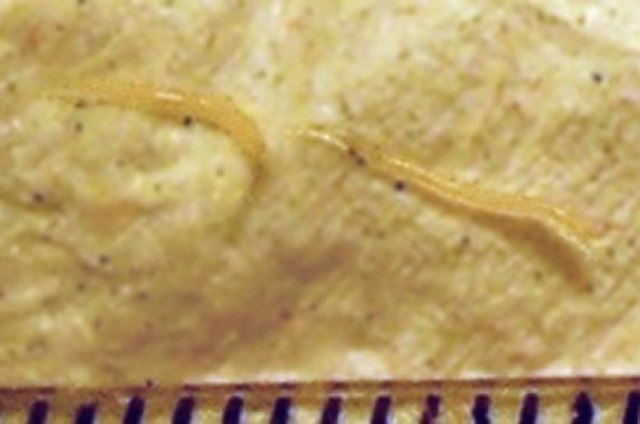Mycobacterium tuberculosis
Mycobacterium tuberculosis, also known as Koch's bacillus, is a species of pathogenic bacteria in the family Mycobacteriaceae and the causative agent of tuberculosis. First discovered in 1882 by Robert Koch, M. tuberculosis has an unusual, waxy coating on its cell surface primarily due to the presence of mycolic acid. This coating makes the cells impervious to Gram staining, and as a result, M. tuberculosis can appear weakly Gram-positive. Acid-fast stains such as Ziehl–Neelsen, or fluorescent stains such as auramine are used instead to identify M. tuberculosis with a microscope. The physiology of M. tuberculosis is highly aerobic and requires high levels of oxygen. Primarily a pathogen of the mammalian respiratory system, it infects the lungs. The most frequently used diagnostic methods for tuberculosis are the tuberculin skin test, acid-fast stain, culture, and polymerase chain reaction.
Mycobacterium tuberculosis
M. tuberculosis in the lungs, showing large cavities the bacteria have dissolved
Slant tubes of Löwenstein-Jensen medium. From left to right: - Negative control - M. tuberculosis: Dry-appearing colonies - Mycobacterium avium complex: Wet-appearing colonies - M. gordonae: Yellowish colonies
Mycobacteria growth indicator tube samples emitting fluorescence in ultraviolet light
In biology, a pathogen, in the oldest and broadest sense, is any organism or agent that can produce disease. A pathogen may also be referred to as an infectious agent, or simply a germ.
A photomicrograph of a stool that has shigella dysentery. These bacteria typically cause foodborne illness.
Magnified 100× and stained. This photomicrograph of the brain tissue shows the presence of the prominent spongiotic changes in the cortex, with the loss of neurons in a case of a variant of Creutzfeldt-Jakob disease (vCJD)
Two pinworms next to a ruler, measuring 6 millimeters in length
Brown rot fungal disease on an apple. Brown rot typically target a variety of top-fruits.








